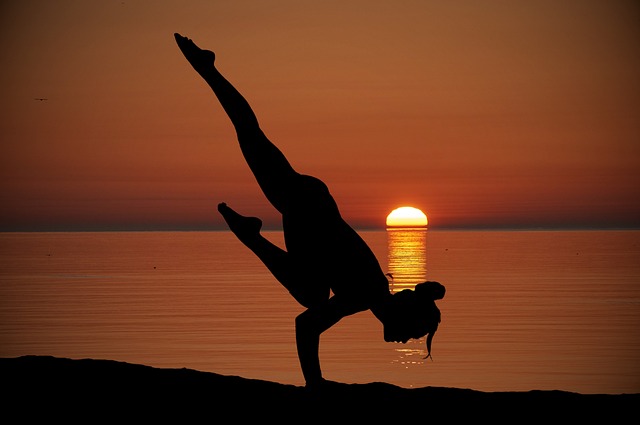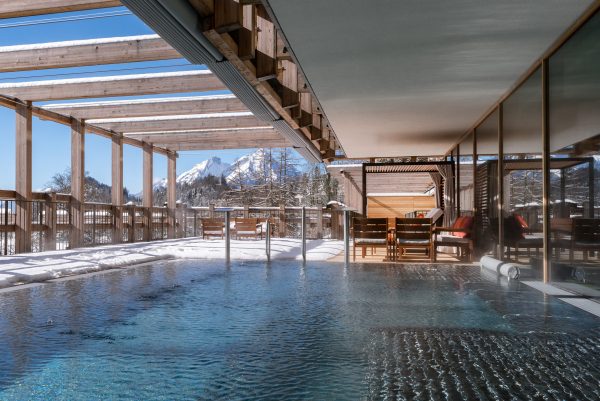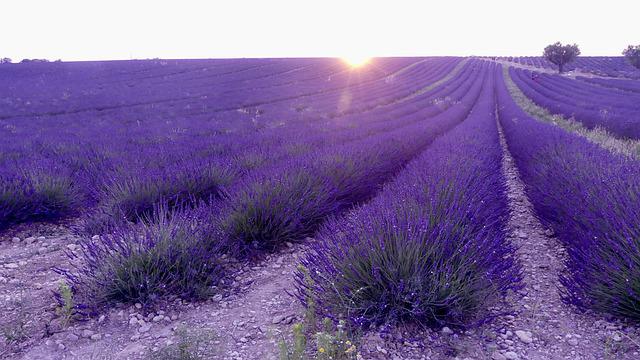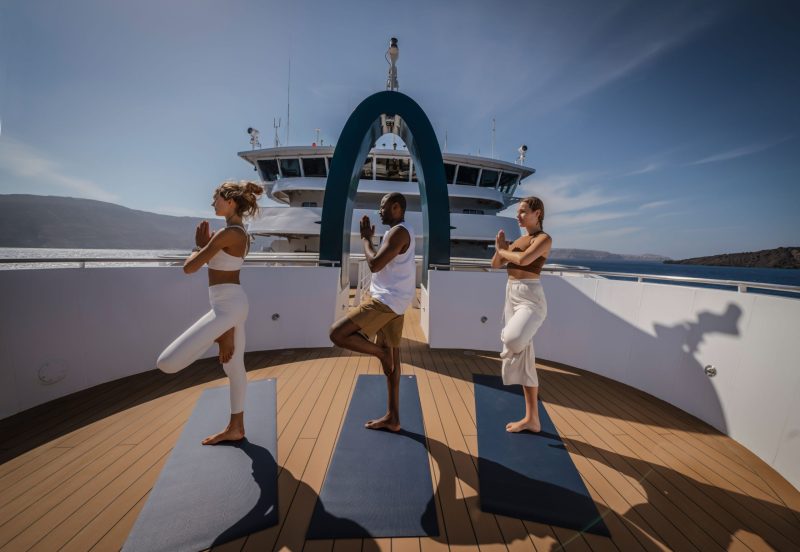Relaxing in picture postcard scenery, mindful walking in forests and hiking up mountains, boating on the lakes and taxing your brain on Salzburg’s history all under the influence of Mozart’s classic sounds. Every element of health is included – even the colourful meadows dotted with flowers and the charming villages and warm welcoming hospitality. This is SalzburgLand, nature’s prescription for health
Your Austrian Tonic: City, Lakes & Mountains
SalzburgerLand is a land of glittering lakes, interlaced with meadows of flowers, soaring mountains, and upright forests – a scenic backdrop for castles and the many charming villages culminating in the city buzz of Salzburg. And keeping you grounded is the reassuringly nationalistic sounds of Mozart playing from your ear pods.
About SalzburgerLand
The Austrian province colloquially called SalzburgerLand lies in Upper Austria, north of Salzburg, bordering Bavaria.Throughout the year, it offers every type of adventure: mountain biking, hiking, climbing, coasteering and canyoning. Cable-cars and chair-lifts glide to access the high ground. Novices or experts can hook up with professional guides to experience the thrills of outdoor mountain life on gentle or challenging well-marked trails. While on the water, it’s boating, kayaking, swimming, paddle boarding and paddleboard yoga for all levels. In the air, paragliding, hand gliding and ballooning. Want more?Traditional sports such as tennis, riding, golf and fishing are all on offer, as are guided tours of local caves and mines.
Most of SalzburgerLand is pure alpine scenery. In the early morning witness the mist rising over meandering streams, the gabled chalet roofs taking shape and pointing to snow sprinkled peaks. Cow bells jingle in the distance and terraces overflow with draping floral displays while feathery mixed forests of needle wood, beech and pine cascade over slopes mirrored in the many lakes of the region. All pristine and soothing. The state’s highest mountain is Grossvenediger (3662 metres), Austria’s deepest and longest gorge is Liechtensteinklamm while SalzburgerLand’s Hohe Tauern National Park is one the largest in Europe. This is nature’s prescription to breathe in freedom, fresh air and scenery.
Whether treading the 10,000 km of hiking trails or pedalling along the 7,000km of biking trails, there are over 550 mountain huts to bid a warm welcome with home-made hearty food. Try the traditional “kasnocken”, the Austrian version of mac-n-cheese served in a mammoth pan accompanied by a glass of freshly pressed elderberry cordial or a jug of beer at Mayerlehenhutte Die Gruberalm , a cosy hut on the gruberalm in Hintersee.( Lanzenhütte), What an appetising sight, delicious in that “can’t stop eating it” way and wholesome sustenance for the walk down.
Lake Fuschl
The crystal waters of Lake Fuschl is renowned for its purity, in fact it is drinking water quality and is the clearest and cleanest of the lakes in the region. Due to the clean water, the underwater vegetation is perfectly preserved with many restrictions in place to protect its natural state and quality for around fourteen species of fish and the flora and fauna. Historically, when Salzburg was still a church principality, the lake was reserved exclusively for the fishing of archbishops, which meant that the complete catch from the lake landed on the Archbishop’s table. Today, with the abundance of fish, the Fuschl Castle Fischerei(fishery) attracts many locals and tourists to taste the specialty fish dishes (the fish soup is a must) served on wooden tables next to the boathouses or the intimate café inside. It also makes a good viewing place to watch the paddleboarders maintaining their balance as they set out over the gentle surface.
The flat lakeside circular hike takes about 3 hours, and is an easy scenic walk which hugs the water’s edge most of the way.The lake is located at a height of 664 meters above sea level. Weather permitting, there is a boat ride on an electrically operated wooden barge. The town of Fuschl am See sits on the shores of the Fuschlsee and is the corporate home of the company Red Bull.
Fuschl Castle
Sitting on the banks, at the western edge of the Lake is Schloss Fuschl, a centuries-old retreat historically frequented by royalty and cultural luminaries as a countryside destination. This historic castle with the four-storey tower was built in the style of the Renaissance, around the middle of the 15th century. From the beginning, it served as a hunting lodge for the archbishops of Salzburg and its court. Since the dissolution of the principality of Salzburg in 1803, and its unification with the Austrian Empire, the castle has had many owners. After World War II, the “Schloss Fuschl” was returned to its owner, and since then, serves as a hotel, reopening recently as the Rosewood Schloss Fuschl, a five-star lakeside historic retreat.
Silent Night
The story of the world’s most famous Christmas carol, “Silent Night! Holy Night!” is inseparable from this region. Joseph Mohr who wrote the text in 1816, served as the assistant priest in Hintersee and helped the poorer rural people of the village by purchasing meat from poachers and distributing it but was imprisoned for his acts. Hidden amongst the trees, there is a Joseph Mohr Memorial Chapel, and trail dedicated to his kindness. During Advent, the Joseph Mohr Lantern Walks take place, with stories about the Silent Night village of Hintersee and the eventful life of the famous assistant priest of Hintersee are shared.
Lake Wolfgang
The lake is famous for its boat trips which connect with other picturesque towns of St. Gilgen, Strobl and St. Wolfgang itself. Inviting and framed by mountains, the lake’s high-water quality has earned it the current status of ‘EU reference water’. It is spectacular at Christmas and lit by a giant lantern.
St. Wolfgang
St. Wolfgang is steeped in myth and legend. The village has a population of 2,800 equating to the number of guests’ accommodation. This quaint village has a fairy tale feel with ornate facades of character buildings and floral displays. Central to the village is the 12th century pilgrimage church of St. Wolfgang, which houses a towering, intricately carved winged altarpiece while outside stands the bell tower, and opposite the traditional family owned honey cake maker. Since 1520, the ancestors of the Wallner family have been active in St. Wolfgang as innkeepers, grocers, gingerbread makers, wax chandlers, and mead producers. Now, in its 17th generation, they make and sell gingerbread made from honey produced from the raw materials of beekeeping for the numerous pilgrims who visit the church of St. Wolfgang.
The Schafbergbahn, a steam-powered cog railway, climbs to the top of the 1,782 meter Schafberg mountain summit for panoramic views of the Dachstein Mountains. It is Austria’s steepest cog railway since 1893. At the top, is the rocky arch known as the “Felsiger Türbogen” or the “Himmelspforte” (Heaven’s Gate) leading towards Lake Mondsee. As the steepest train in the country, it takes 35 minutes to reach the top (or a three-hour hike) where there is a restaurant and hotel with great views of the sunrise and sunset.
Sightseeing in the city of Salzburg
As the fourth largest city in Austria, Salzburg is a baroque city with the old quarter awarded a UNESCO World Heritage Site in 1997, home to Mozart and scenes from the Sound of Music. Towering above is the mighty 11th century Hohensalzburg Fortress, the largest fully preserved fortress in central Europe and is accessed by the Festungsbahn funicular railway. It’s the second most popular attraction in Austria and often hosts chamber music and classical concerts. Mozart’s residence where he lived from 1773-1781 is now a museum on the first floor at Makartplatz 8 which shares the history of the house and life of the Mozart family. This walkable city steers through narrow alleys opening to spacious squares, prince-archiepiscopal residences, monasteries and numerous churches and the central Baroque Cathedral. Colourful and enchanting, the Mirabelle Gardens are dotted with fountains, a dwarf garden and maze. The Museum of Contemporary Art has two locations, the Rupertinum in the old quarter in a baroque town house and the museum on Mönchsberg Mountain. And for fun and surprise, Hellbrunn Palace entertains with its trick fountains secretly laid in moving figurines, deceitful water characters in mysterious positions and set in mystical grottos. It was built as pleasure palace for Salzburg’s prince-archbishops as an oasis of enjoyment and pleasure. Watch out for hidden water jets!
Where to Stay
The Arabella Jagdhof Resort offers 143 rooms minutes from Lake Fuschl. Many rooms have access to a balcony or terrace to enjoyi gorgeous peaceful Alpine views over meadows and the Salzburg mountain framework. There is an excellent and stylish wellness centre and pool as well as a small fitness room.
Regional produce, locally produced drinks and award-winning honey from their own beehives are offered and served at the appetising breakfast buffet and restaurant, (pumpkin cream soup highly recommended) or indulge at the weekend in the gourmet restaurant with the multi-award-winning 3-toque chef Johannes Fuchs.
Arabella Jagdhof Resort, am Fuschlsee is owned by Marriott Hotels & Resorts. Doubles from approximately £126 per person per night (based on 2 sharing, B&B for 2 nights in May 2025). www.marriott.com
Set along Wolfgang see Lake is the chic and cosy Seevilla Hotel, a 4-minute walk from the Schafberg Cog railway station. It offers 29 stylish and contemporary guest rooms. It has been family run since 1918 and enjoys a Falstaff restaurant award. Taking in the serenity of the lake from the restaurant which opens out to the terrace on the water and the treatment rooms which enjoy relaxing view. A yoga space and gym is reserved in the attic. Other facilities include an inviting sauna, a steam room and garden area as well as an infinity outdoor pool with direct lake access.
The Rosewood group opened this former 15th century castle in the Austrian Alps in July 2024 as a luxury lakeside retreat. It offers a total of 98 guestrooms, including 42 suites and six lakeside chalets. Each guest mini bar is different and hand painted to reflect the seasons by local artist Marie Hartig. The six food and beverage destinations serving regional produce include a Whisky Room, an extension of the Schloss Bar, created in a moody design, serving 70 high quality rare whiskeys. There is also an Asaya Spa and beach club.
Where to eat
Hotel Jakob
With a 170-year old history, this is a popular institution in the quaint town of Fuschl am See. Reserve the wooden BBQ-hut in the garden for an exclusive and unique dinner experience, (minimum of 6 persons). Fresh local produce with fresh cuts of meat and fish, vegetables and fruit are conveniently prepared attractively laid out to cook and serve from the central log fire.
This Forest House Wartenfels has two cosy bars and a large terrace outside looking out to the Salzburg mountains. A wide range of traditional Austrian dishes and wines are served.
Try Local Food Favourites:
Salzburger Nockerl: a sweet soufflé served as a dessert, a culinary specialty in Salzburg.
Kasnocken: small pasta dumplings covered in cheese and onions
Jause: various cold cuts, cheese, savoury spreads and pickled vegetables, usually served on a wooden board.
Mozart balls: made of marzipan with real pistachio and hazelnut nougat cream, coated in dark chocolate, (those in silver and blue wrapping are made in Salzburg)
Breathless from the range of outdoor adventures, mesmerized by Alpine views and fuelled by Austrian cuisine and beverages SalzerburgerLand has everything to offer, combined with the culture of Salzburg and Mozart’s operas playing in the background. Definitely an Austrian tonic whatever your ailment. This is SalzburgerLand, nature’s prescription for health.
Getting There:
Fly from London Gatwick to Salzburg with British Airways from £51 each way, based on a return fare in May 2025 www.ba.com/gatwick. (Customers flying in Club Europe/with eligible frequent flyer status* can take advantage of the British Airways lounge at London Gatwick’s South Terminal.)
The Editor stayed in the Fuschlsee region of SalzburgerLand as a guest of the SalzburgerLand Tourist Organisation (www.salzburgerLand.com).
Tourist Offices:
- SalzburgerLand: www.salzburgerLand.com
- Fuschlesee Tourist Office: www.fuschlsee.salzkammergut.at
- Wolfgansee Tourist Office: www.wolfgangsee.at
- Salzkammergut Tourist Office: www.salzkammergut.at
Check out SalzburgerLand, nature’s prescription for health.
Images provided by SalzburgerLand Tourism.





